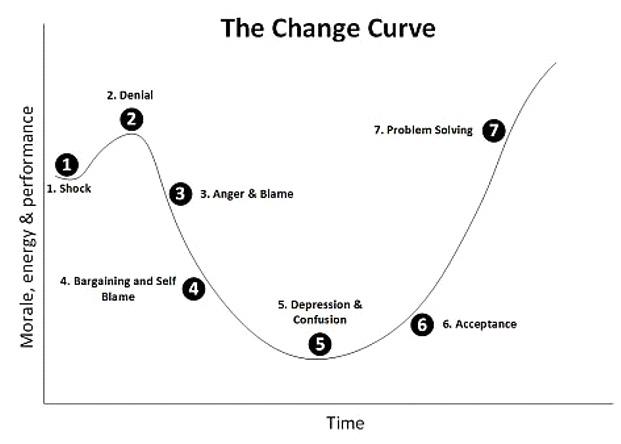
1 minute read
INTRODUCING THE CHANGE CURVE
from The PCO - news from the International Association of Professional Congress Organisers (IAPCO)
by IAPCO
The Change Curve, a popular model (Kubler Ross) that comes in various guises, is a tool that identifies the transition people go through when something happens that affects the smooth running of their daily lives whether it be organisational (large or small impact) or as catastrophic as personal loss (grief).
The reaction stages are similar. “Initially it is shock, quickly transforming into denial, before turning to anger and blame”, explained Ori Lahav, IAPCO President, introducing the Curve at the outset of IAPCO’s webinar at Planet IMEX. “At this point some will drop out while others are still on board, able to cope and move to the final two steps, acceptance and then, of course, problem solving.” Understanding this model helps us to make a better personal transition when challenges arise, and also to assist and support the needs of others. It helps us to predict how people will react.
It is a journey faced frequently, to a greater or lesser degree, but hopefully it can identify where one came from and what to expect moving forwards. It helps us to understand why we are not going to be at peak performance during periods of unwanted change. The Chart reminds us that it is normal and helps us to understand stress and the route to problem solving – something that has been in high demand this year.

